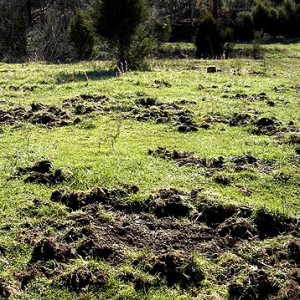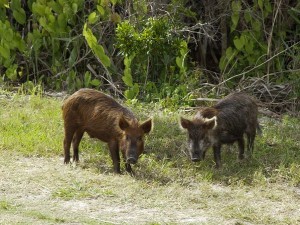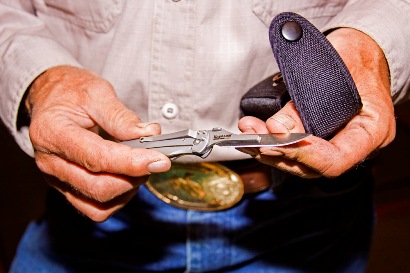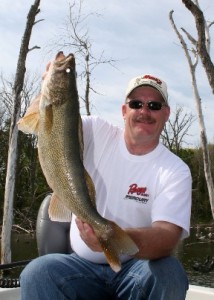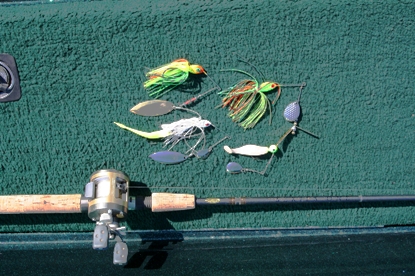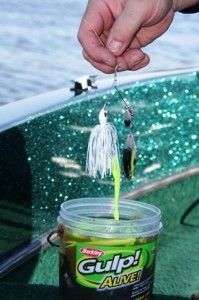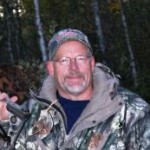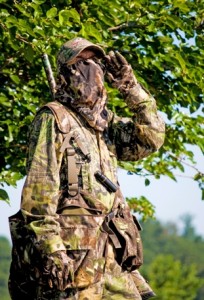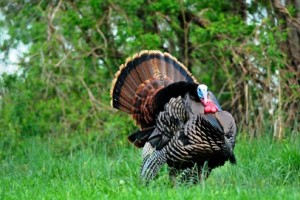By Steve Sorensen
They’ll send shivers up your spine when you think about those tusks shredding an abdomen or cutting
through a calf muscle like a scythe.
Wild pigs. Russian boars. Feral hogs. Whatever you call them, Hogzillas are not traditional North American big game animals. But they can be big. Real big. And they’re animals. Deadly animals.
I remember as a kid reading a magazine article about hunting wild pigs. It sounded exciting and I remember seeing pictures of a big bristled pig with long, razor-sharp tusks. It probably told the where-to and the how-to, but the why-to of hunting pigs is more relevant than ever because the population of wild pigs is exploding across North America. And they can be a lot of fun to hunt.
Why hunt pigs? To be blunt, because they need killed. It’s really that simple. Wherever they are, they reproduce rapidly, and are almost impossible to control. You might have your own reasons for hunting pigs, but if you need reasons here are eight great ones.
Reason #1
Pigs are destructive. This is the number one reason why game departments never close the season on wild pigs. Pigs compete with other wildlife. They’ll eat anything they come across. They’ll devastate turkey populations because they’re so methodical in their rooting that they can’t miss turkey nests. Nor do they miss fawns. If you have pigs in your deer or turkey hunting area, you need to kill them.
Reason #2
Hunting pigs is an effort in conservation. Conservation is first and foremost about habitat, and killing pigs is a necessity to save habitat for other species. Pigs in North America are an invasive species – and they destroy the habitat for native species. To put it mildly, they don’t play nicely with turkeys, deer, nor songbirds and other non-game species, and in most places they have no natural predators other than man.
Reason #3
Pigs are prolific. They’ve been described as the most prolific large mammal on the face of the earth. Some people say they’re born pregnant. No, that’s not possible, but a female pig can bear two or three litters per year and some are mature enough to breed at 8 or 9 months. And if a litter averages about six piglets, one adult pair becomes 20 porkers in a year. That makes normal exponential growth look anemic. Hunting is the best way to deal with explosive populations tearing up the landscape.
Reason #4
Pigs are delicious. Leaner than domestic pork, it has a flavor that many people think surpasses grocery store pork. In fact, some high class restaurants prefer serving wild pork. Those might be subjective opinions, but it’s a fact that wild hogs don’t have the hormones that domestic pigs are fed. Don’t let wild pigs go to waste – the Internet is full of recipes, so get one and eat healthy.
Reason #5
Pigs are trophies. They may not have the mystique and the uniqueness of antlers, but they have a lot of bone in their skulls. A good skull with long, curling tusks makes an impressive display and invites people to ask for the story behind it.
Reason #6
Pigs are exciting. They’re perhaps the most accessible dangerous game in North America. They’ll send shivers up your spine when you think about those tusks shredding an abdomen or cutting through a calf muscle like a scythe. Don’t underestimate tuskers. They are known to come after hunters, so make sure you’re well-armed and know how to shoot.
Reason #7
You can hunt pigs with any weapon. Want to try out your new crossbow? Practice on live game with your recurve? Test the performance of your muzzleloader? Get the excitement of handgun hunting? Virtually any style of weapon, suitably equipped, properly powered, and in capable hands is great for wild pigs.
Reason #8
Pigs can be hunted anytime. Spring, summer, fall, winter. Wild pigs are a great way to extend your season because in most places with wild pigs, hog time is all the time. And don’t think hunting inside an enclosure means they’re tame. Guys from southern states where pigs are overpopulated are capturing them and selling them to the ranches. So when you’re hunting a Pennsylvania ranch you’re helping to control pigs in, say, Georgia or South Carolina.
If you need more reasons to hunt pigs, you can probably find them. But the bottom line is that it all adds up to fun. So, get with a buddy and make plans to go pig hunting. Once you’ve done it, you’ll be looking for an opportunity to do it again.
***
About Steve Sorensen
 Award-winning outdoor writer and speaker Steve Sorensen loves the Havalon knife, and has been a fan of knives since he begged his dad for a hunting knife when he was six years old. His articles have been published in Deer & Deer Hunting Magazine, Sports Afield, and many other top magazines across the USA. Invite Steve to speak at your next sportsman’s event, and follow his writing on his website, www.EverydayHunter.com.
Award-winning outdoor writer and speaker Steve Sorensen loves the Havalon knife, and has been a fan of knives since he begged his dad for a hunting knife when he was six years old. His articles have been published in Deer & Deer Hunting Magazine, Sports Afield, and many other top magazines across the USA. Invite Steve to speak at your next sportsman’s event, and follow his writing on his website, www.EverydayHunter.com.
For more articles on pig hunting click here, and for the
best wild pig skinning knives, click here.
7,743 total views, 1 views today


